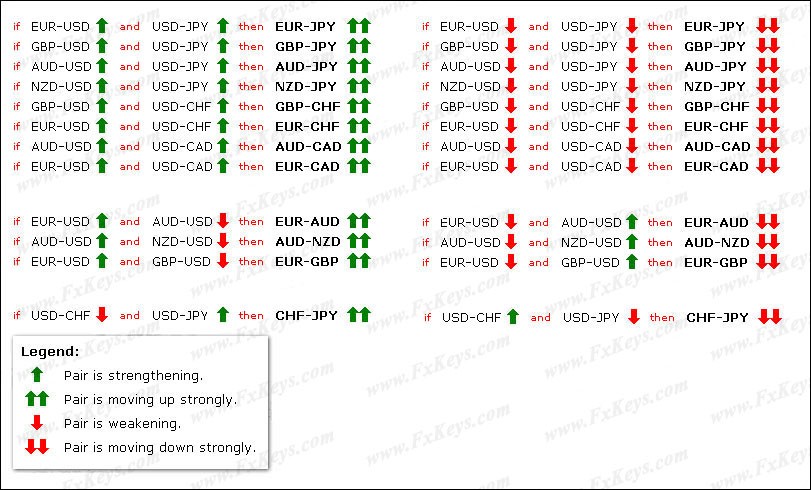Fx Currency Pairs Major Minor Crosses Exotic
Post on: 14 Июль, 2015 No Comment

What Are Forex Currency Pairs
Now that we have taken a good look at What is Forex . Training . Software . Trading Times and Analysis . we need to understand what it is that we are actually trading. We should by now have understood that we are Trading Money. Now we need to understand how that money is displayed in a typical foreign exchange market.
Currency is generally an accepted form of money, including coins and paper notes, which is issued by a government and circulated within an economy. Used as a medium of exchange for goods and services, currency is the basis for trade.
When you trade forex, you will be trading a currency pair for example the GBP/USD. Directly put, ‘What is the value of the GBP against the USD?’ One currency normally has a greater value than the other. This is mostly reflected by a countries economic status. In the above example, the GBP is called the base currency and USD is called the quote currency.
The Bid (buy price) represents how much of the quote currency is needed for you to get one unit of the base currency. Conversely, when you sell the currency pair, you sell the base currency and receive the quote currency. The Ask (sell price) for the currency pair represents how much you will get in the quote currency for selling one unit of base currency. So in the above example, the bid or buy price represents how many USD are needed to buy one unit of the GBP. The ask or sell price represents how many USD you will pocket for selling one GBP unit.
In previous articles, I mentioned go long and go short without properly explaining. That is what It basically means to go long or go short on a currency pair.
In the above, you would buy the currency pair (go long) if you thought the GBP was going to gain value against the USD. Conversely you would sell the pair (go short) if you believed the GBP was going to lose value against the USD.
Forex Jargon 102:
Traders buying currencies are referred to as Bulls . Traders Selling currencies are referred to as Bears .
Buy = Go Long (Bulls) (Bullish Market when price is going up) i.e. There are many Bulls for the GBP/USD pair today, meaning the price is going up. There are a lot of traders buying the GBP/USD pair and the forex chart is displaying the value of the GBP against the USD going up up and up.
Sell = Go Short (Bears) (Bearish Market when price goes down) .i.e. There are many Bears for the GBP/USD today meaning the pound price is depreciating against the dollar. It’s time to join the party and sell the GBP/USD for some green. Green = Profit.
The Bid (buy Price for the broker) is normally lower than the Ask (sell Price for the broker) . Bid on the left Ask on the Right. The ask price is also refereed to as the offer price. The broker or bank always buys currency at a cheaper price than they sell it. That is how they make their margin. Your broker offers the ask price, so in the above example the asking price for a trader to buy the GBP would be the value quoted on the right side. You will then Buy the GBP for 2.0466 from the broker and if you wish to sell the GBP you would sell it for 2.0463 to the broker.

If the Trader bought the GBP/USD pair @ 2.0466, they would have to wait for the value to go up and above 2.0466 in order to sell the pair for a profit. If the price remains exactly the same, they would have to sell it at a loss, because the broker will always buy at a lower price. So if the value stays the same or lowers you will be losing money if you had bought the pair. The same applies if you sold the pair and the price went up instead.
Simple when you know how .
Currency quotations use the abbreviations for currencies that are prescribed by the International Organization for Standardization (ISO) . For example the major US Dollar is abbreviated as (USD). Currency Symbols always have three letters. The first two identify the country and the third the currency.
Major Fx Currencies
All currencies and pairs normally have a Nickname .The Term on far right is the currency or pair Nickname. For example, the US Dollar is nicknamed Buck. These Nicknames vary from trading centers in New York, London and Tokyo.
The major currencies and their designation in the foreign exchange market are:














